
[Click on image for larger version]
This is the year in the East Coast cicadas’ 17-year life cycle when they come out of the ground to sing and molt and mate. This guy was in one of the abbey’s arbor vitae trees this morning.
Watching a bewildering world from the middle of nowhere

A Carolina wren in a sycamore tree
Recently a visitor to the abbey made a list of the birds she identified here during a few days of birdwatching. The visitor is a friend of Ken’s, Rebecca, from Washington D.C. Here is her list of birds seen at or near Acorn Abbey:
1. Loggerhead Shrike
2. Carolina Wren
3. American Crow
4. Barred Owl
5. Carolina Chickadee
6. Common Yellowthroat
7. Cooper’s Hawk
8. Northern Cardinal
9. Red-bellied Woodpecker
10. Ruby-throated Hummingbird
11. Tufted Titmouse
12. Eastern Phoebe
13. Eastern Bluebird
14. Cerulean Warbler
15. Chipping Sparrow
16. Scarlet Tanager (en route to Acorn Abbey)
17. White-breasted Nuthatch
18. Pileated Woodpecker (Hanging Rock)
19. Wild Turkey (Hanging Rock)
20. Turkey Vulture (Hanging Rock)
21. Black Vulture
22. Eastern Towhee
23. House Sparrow
24. Mourning Dove
25. Northern Mockingbird
26. Brown-headed Cowbird
27. Pine Warbler
28. Indigo Bunting
29. American Redstart
30. Brown Thrasher
During the past couple of weeks, barley has been in the news because of newly found health benefits. An article in Nutrition Journal ends with this conclusion:
“The results indicate that the BK [boiled barley kernel] evening meal, facilitate glucose regulation, increase the release of GLP-1, reduce subsequent energy intake while at the same time decreasing hunger over 2 subsequent meals, and reduce fasting FFA the subsequent morning, possibly mediated through gut microbial fermentation of the indigestible carbohydrates.”
This is interesting, in that it makes barley a sort of low-carb carb and reduces, rather than increases, hunger at the next meal the ways carbs do. And barley benefits the intestinal flora to boot.
Barley pilaf is easy. First, brown the raw barley in some oil (such as sunflower oil) that can handle moderate heat. Then boil the barley in water — about 1 part barley to 2.5 parts water. Make sure the water is absorbed — you don’t want soggy barley. Add your other pilaf ingredients to a skillet, sauté them, then add the barley. The pilaf in the photo had only browned onions and garlic as the pilaf ingredients.
Barley is delicious, and everyone should love the chewy, pasta-like texture.
March and April were cold. Spring is about three weeks late this year. Not only that, but the long-range forecast shows below-average temperatures through mid-May, with above-average rainfall. This will do no harm to the spring crops. Cabbage, lettuce, onions, etc., love cool, wet weather. I’m a bit concerned, though, that these early crops will mature so late that we’ll be behind getting the summer crops started — tomatoes, squash, etc. We’ll do everything we can to rush the spring crops to maturity. The irrigation system is in place, though it has been very little needed so far.
This year, we’re mulching heavily, hoping that it will conserve moisture and keep down the weeds. Back in 2011, I recommended a book: Gardening When It Counts: Growing Food in Hard Times, by Steve Solomon. In retrospect, though this book contains lots of good information on water frugality, it steered me wrong in some ways. The author is of the opinion that, if you live in an area with enough rainfall to support deciduous forests, then you can garden without irrigation. He also does not think that mulching is very important. I strongly disagree with him. With summer weather like the weather we’ve had here for the past five years, I am strongly of the opinion that having a reliable garden without irrigation just is not possible. Even when there is rainfall, as summer temperatures rise daily to 95 and above, such rainfall as we get is rapidly dried up, and heat stress and water stress become severe. Mulch, I’m hoping, will help keep the soil cooler and conserve water. As a bonus, the hay we’re using as mulch will decompose into the soil, helping to feed the worms.
Ken has worked like a dog in the garden this year. Sometimes when I look out the window from the comfort of the kitchen and see him working so hard, I feel guilty. But Mark Bittman, writing in the New York Times, has reminded me of a very important principle: a garden without a kitchen (and someone slaving in that kitchen) is useless. Every well tended and productive garden must have a kitchen running at full tilt, with someone working in that kitchen who understands what to do with the stuff coming from the garden. We’ve got that process down. Here at the abbey, the garden and the kitchen are a smoothly functioning unit.

Young lettuce. I hope we’re as covered up with lettuce this year as we were last year. I felt as though I spent half the day every day last spring washing lettuce.
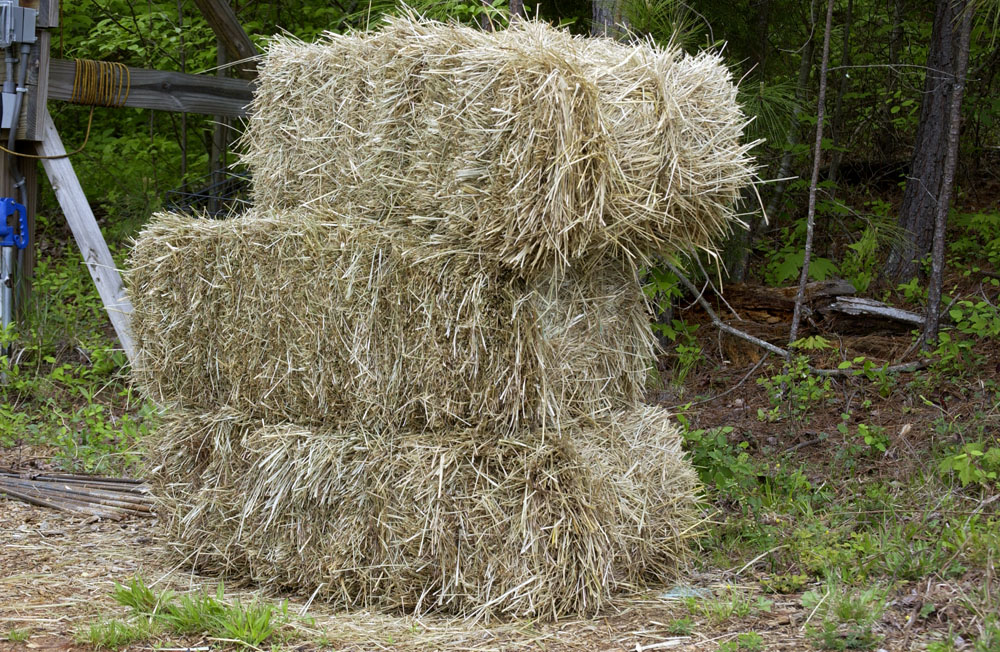
Hay for mulching. We’ve bought it from a farmer near Sandy Ridge for as low as $2 a bale.
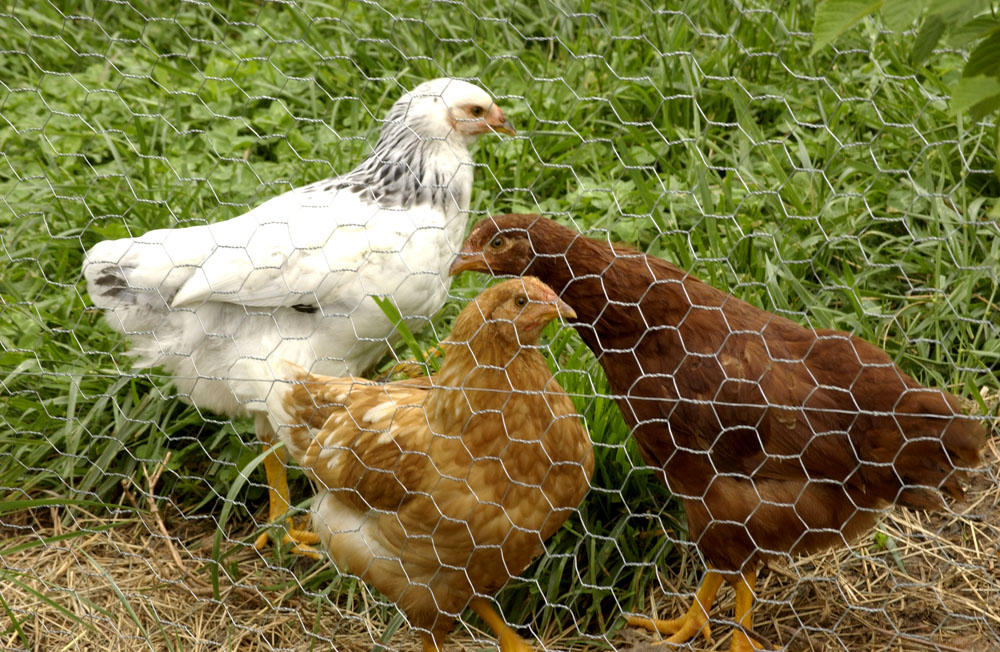
Marilyn, Bridget, and Sophia, the 2013 spring chickens. They’re thriving, and their voices are starting to change into hen sounds rather than cheeps. The abbey now has seven chickens.
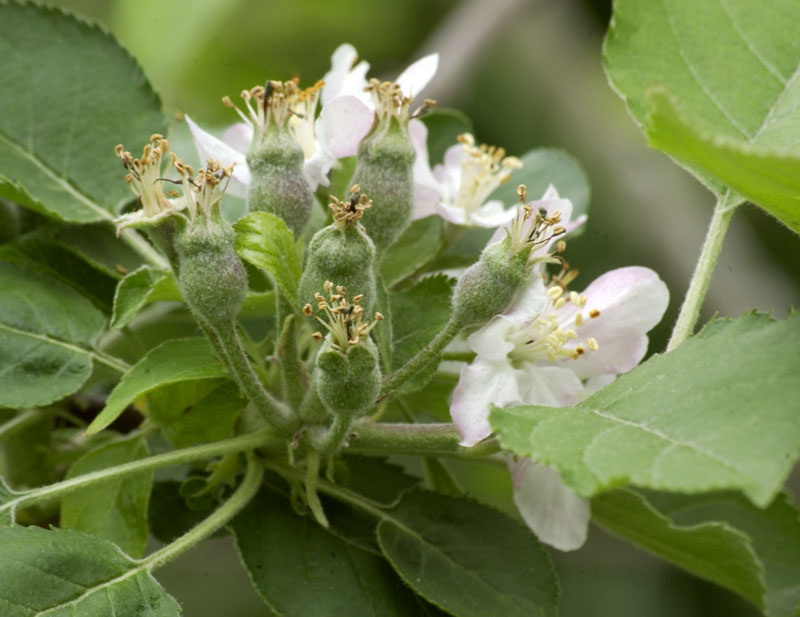
Tiny apples. This is the apple trees’ fifth spring. This year, for the first time, they’ve prolifically set baby apples. I’m hoping for a real apple crop this year.

Woody Welch for the New York Times
Ken has a longish piece to be published in Sunday’s New York Times. It was released to the web today.
It’s a sort of preview of his book, which will be released May 14.

Click on photos for high-resolution version. Butterfly in the bluets.
There is life at the abbey, but a never-ending winter and a calendar clogged with a heavy burden of anti-fracking political activities has kept everyone down. As for winter, blame a persistent disturbance in the jet stream, which sent arctic air too far south and warm air too far north. Greenland was melting while it was snowing in the southern U.S. The pattern seems to be breaking. There is still time, I think, for April (as the poet Edna St. Vincent Millay said) to come babbling down the hill like an idiot, strewing flowers. Shake a leg, April.

A week ago, this is what we had.
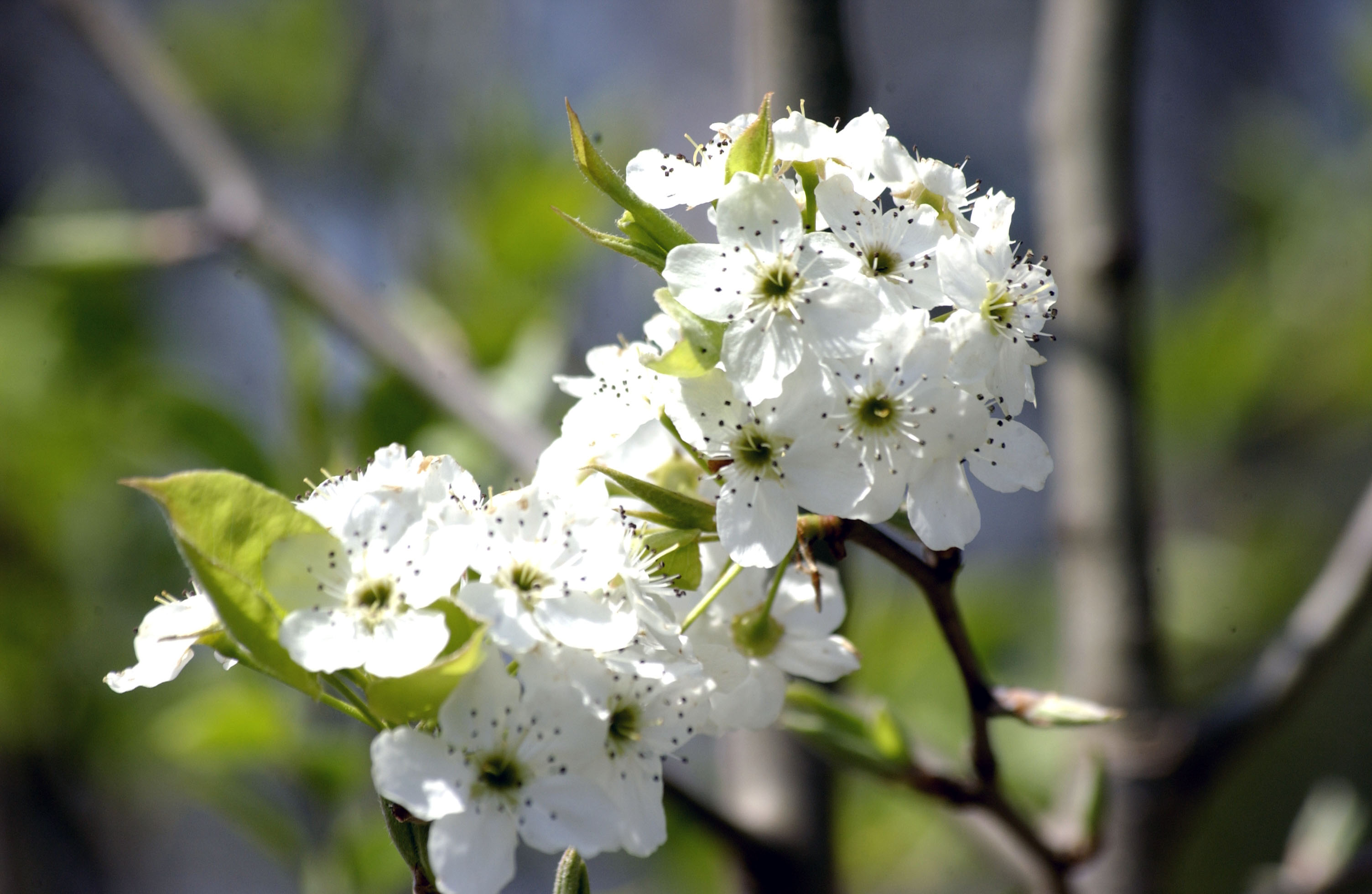
Blossoms on a wild pear tree, illegitimate offspring of the neighboring Bradford pears
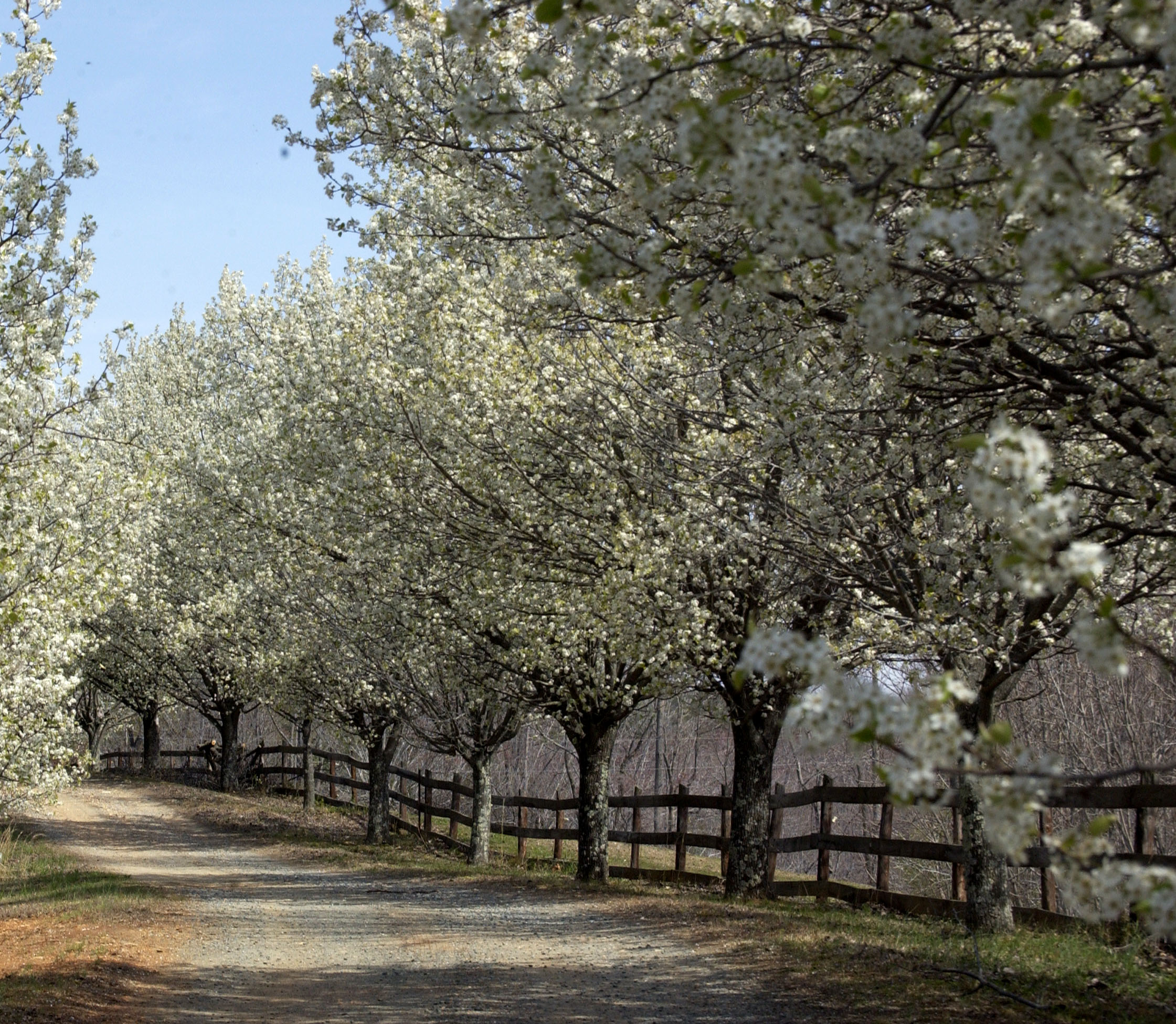
The Bradford pears that spread into the wild, thanks to the birds

A new gate to keep the chickens in the orchard and out of the garden
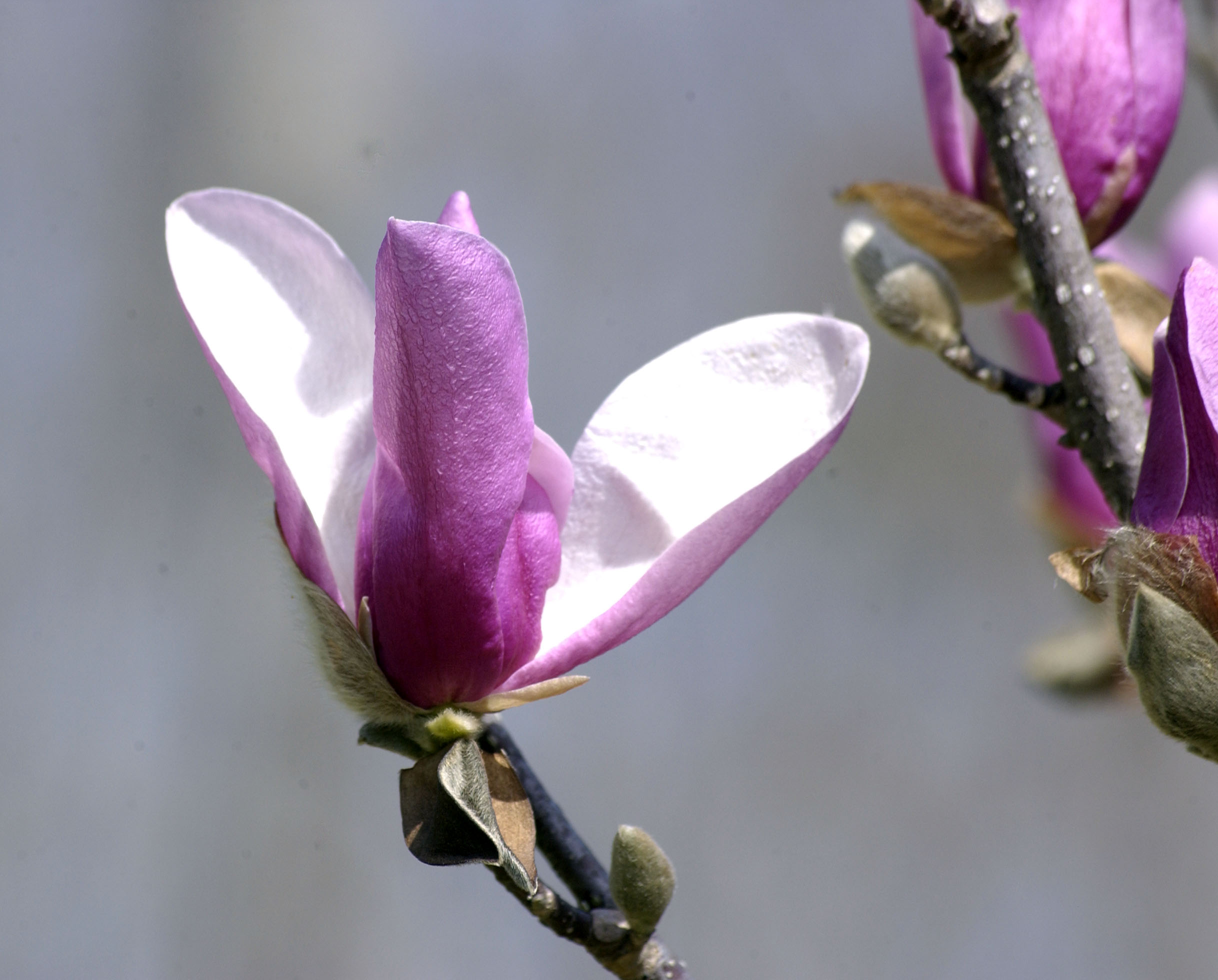
Bloom on a deciduous magnolia, newly planted
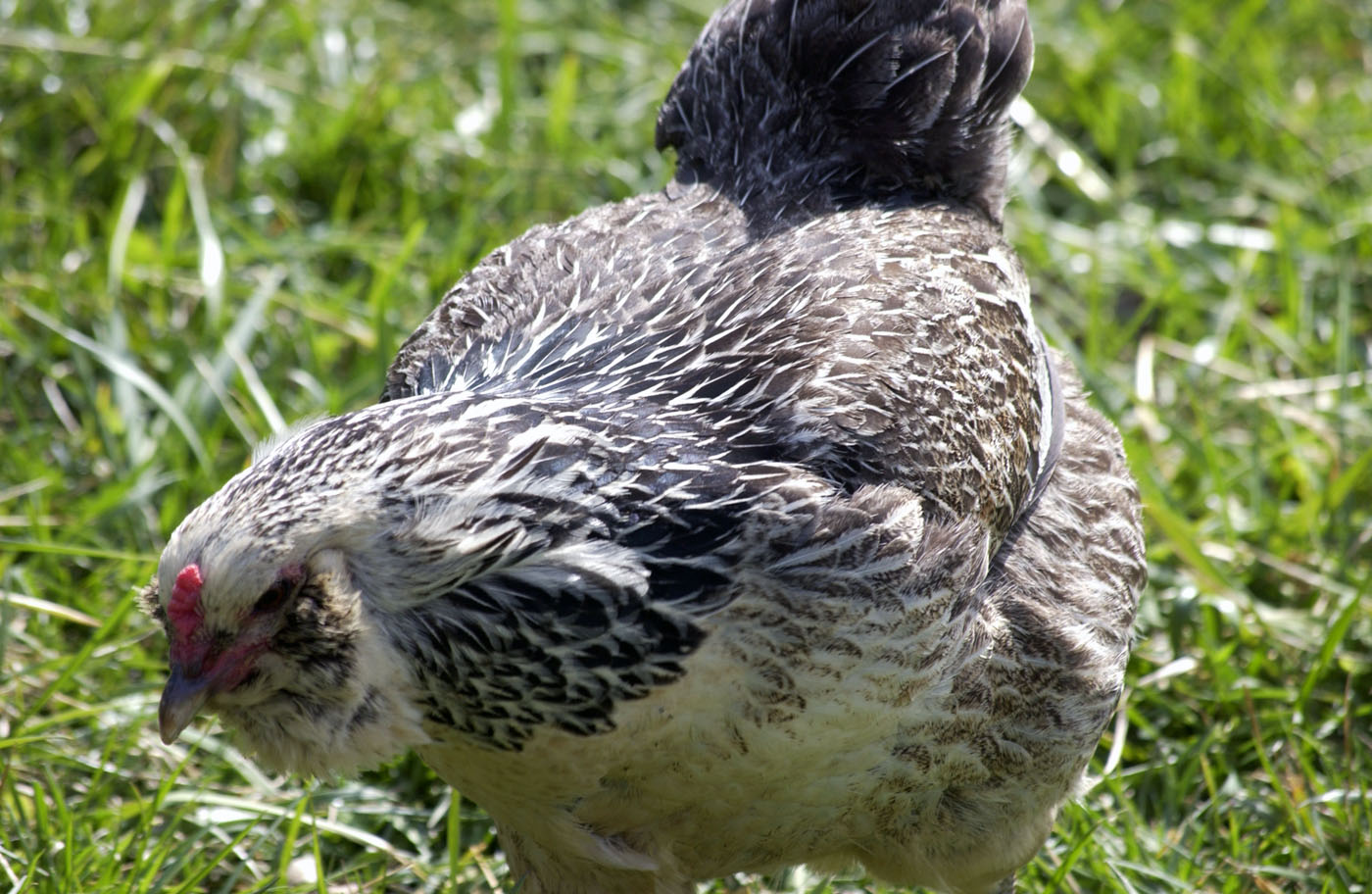
Helen, restless with spring fever
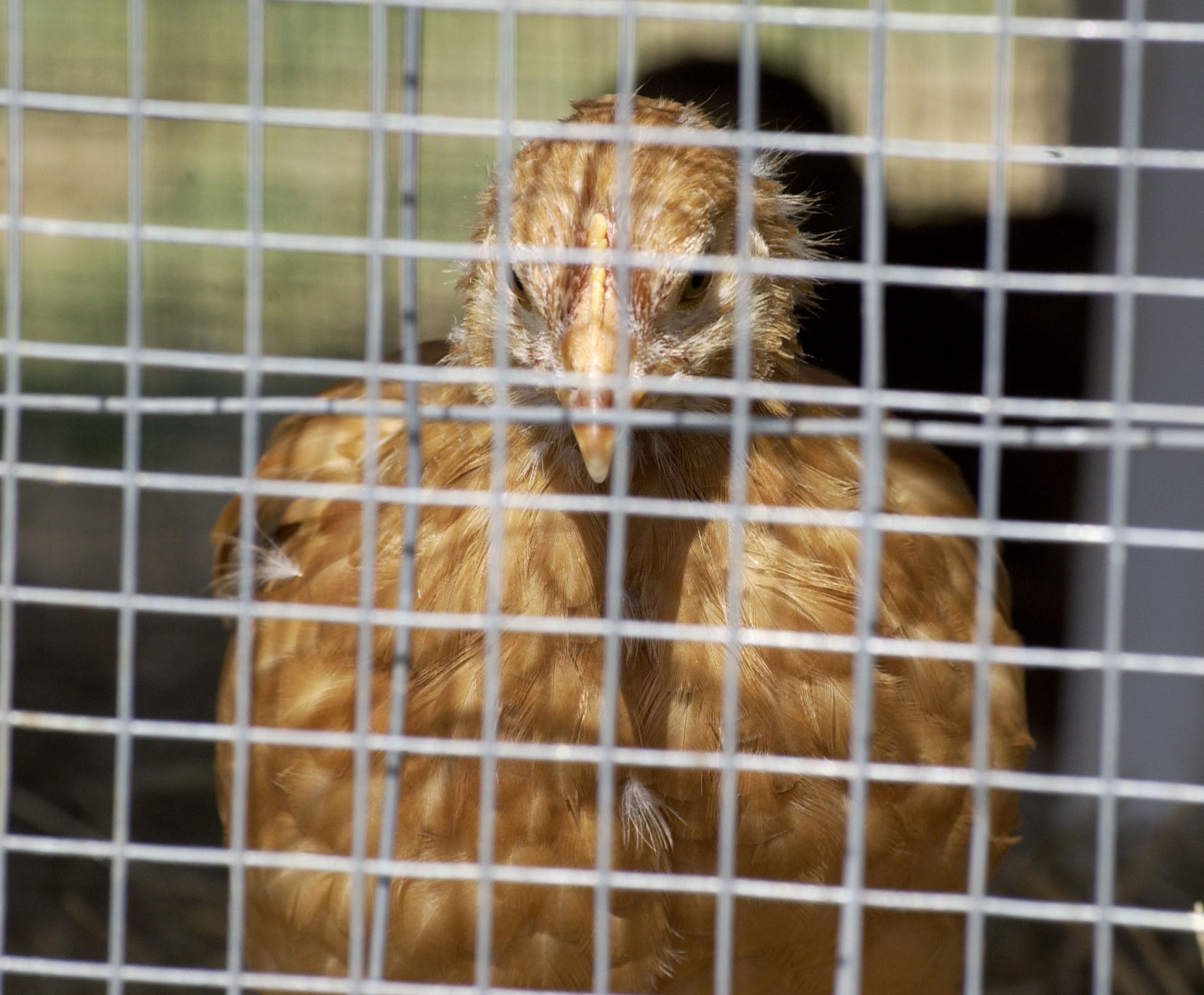
One of the three new spring chickens, still in protective custody. More photos to come. This generation will be named for 1950s starlets.
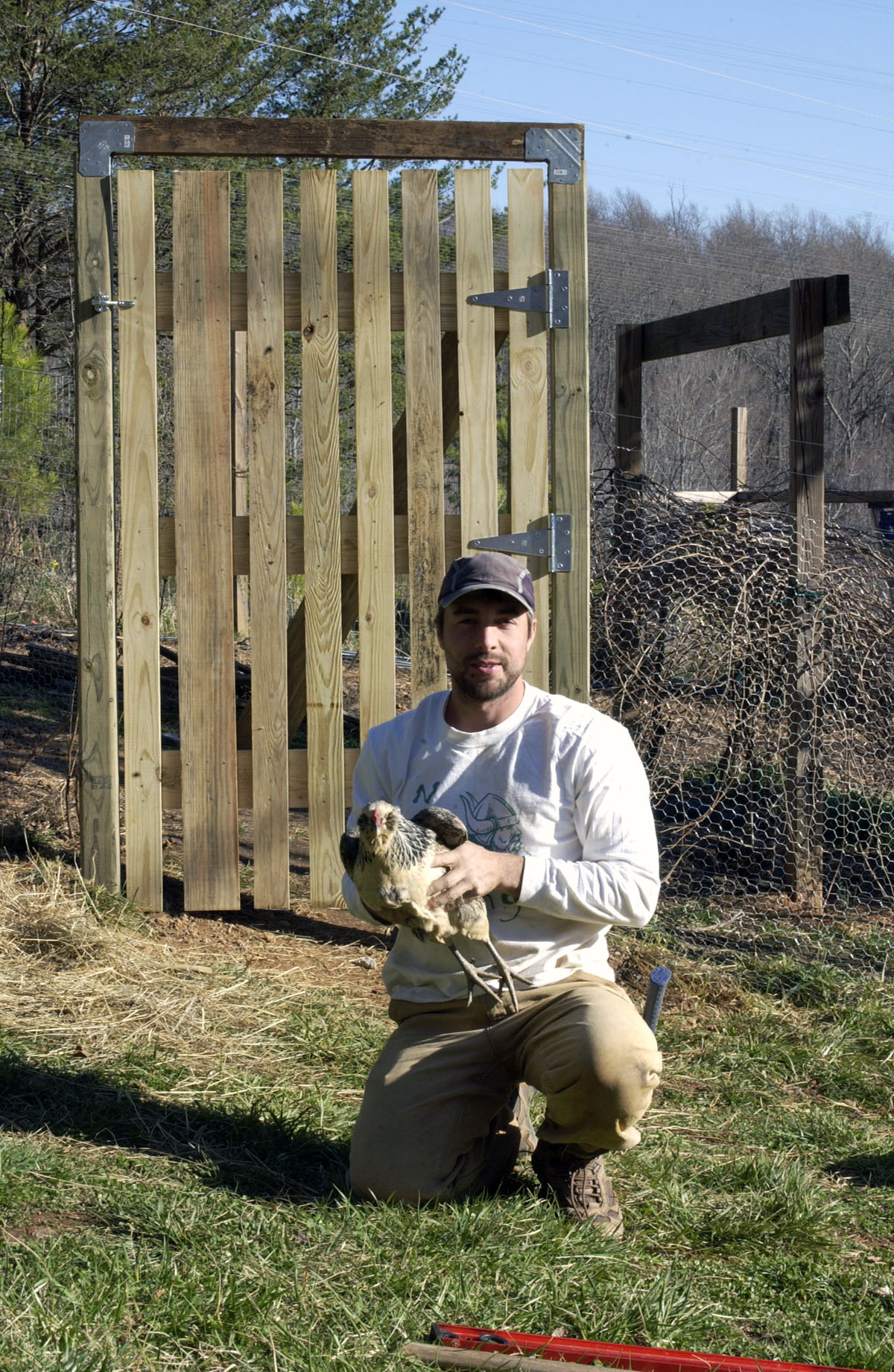
Ken Ilgunas is back and will be here at least for the next few months. He has, I think, been soaking up solitude here at the cloistered abbey, resting up from throwing himself at the world-out-there in his last adventure. He promises to post to his blog soon. We have some spring projects planned, of course. And Ken will have a busy time soon around the release of his book on May 14.
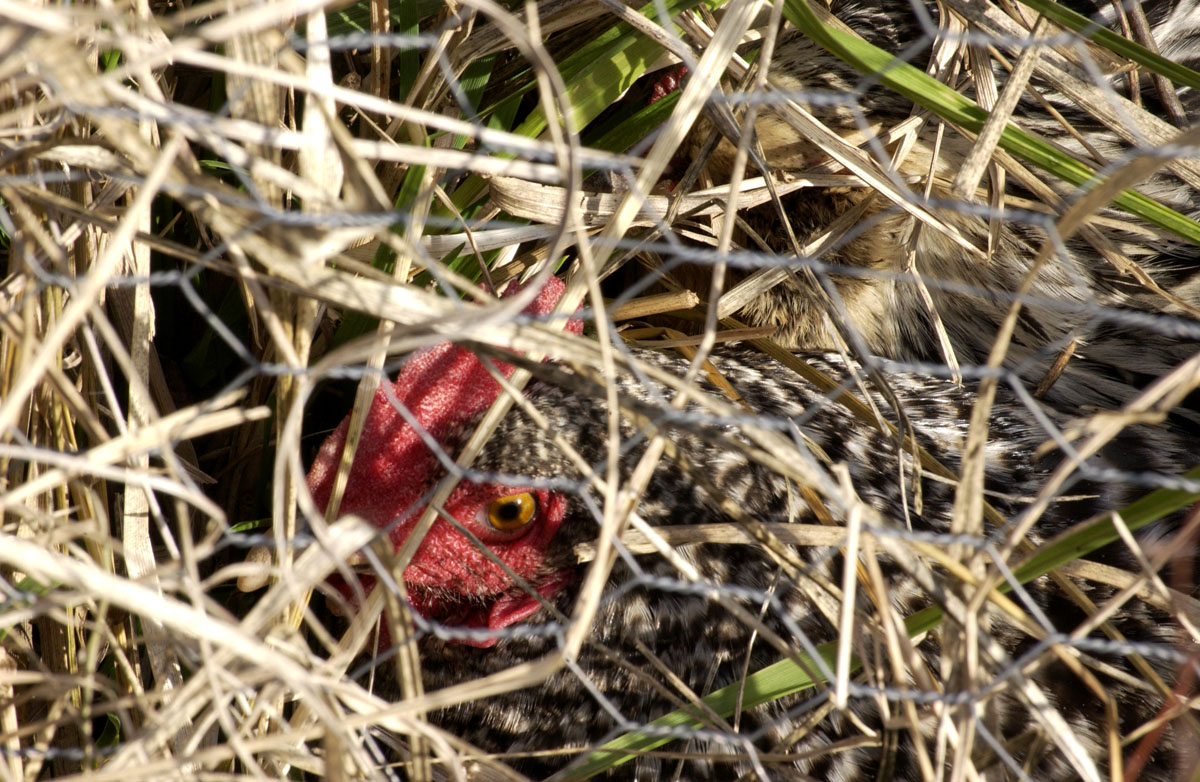
There actually are two chickens in this photo. Helen is tucked in behind Josephine. You can see a bit of Helen’s comb near the top of the photo.
It has been well over a year, maybe almost two years, since there has been a hawk attack at the abbey. We had a hawk attack today, and, thanks to the cat, I scared the hawk away before any chickens got hurt.
I was lying on the bed reading. Lily was with me, snoozing under a blanket. It is possible that I heard chicken sounds, but I don’t have a clear recollection of that. It was Lily who alerted me that something was up. She jumped out from under the blanket with a look of alarm and let me know, by the direction she was looking, that something was going on up the hill where the chickens are. I dashed out in my sock feet and scared off a hawk. It was a big hawk, with a wingspan of three and a half to four feet. When it saw me, it took off from the ground near the chicken house. It flew through the overhead fishing line that acts as a hawk deterrent and and flew to the edge of the woods. It perched on a limb. While I was looking for a rock to throw at it, it flew off.
The girls had hidden themselves pretty well, especially Josephine, who I couldn’t find at first. Fanny and Fiona were hunkered in a corner near the asparagus patch. Josephine was well hidden in some thick grass above the chicken house. Though Helen later joined Josephine in the grass, when I first saw Helen she was on the ground near the chicken house. It’s possible that Helen tried to engage the hawk. She is the biggest and bravest of the four chickens.
When chickens see aerial predators, their instincts kick in, and they’re good instincts: Engage and defend yourself if you have no choice, otherwise hide quickly, keep your tail feathers and head down, and don’t squawk.

Fanny and Fiona, hunkered down beside the asparagus bed. Notice how their tail feathers are lowered. They were farther away from the scene than Helen and Josephine.
If ever I said, in grief or pride, I tired of honest things, I lied…
— Edna St. Vincent Millay
Why are there so many varieties of crackers in the grocery store? My answer: So that we can go on pretending to ourselves that we wouldn’t much rather have a simple saltine. The ridiculous prices of “fancy” crackers ought to be enough to put you off them. Really, how much should some spices or bird seed add to the cost?
As we all strive to purge ourselves of our food snobbery and honor the simple provincial things, let’s honor crackers. The saltine cracker, I believe, was developed in the 19th century, in America, as a kinder, gentler alternative to hardtack. They became popular very quickly and even spread to other parts of the English-speaking world.
These days, they’ve even gotten a bit healthier. Reduced salt and fat-free versions are available pretty much everywhere. Whole Foods’ house brand, 365, is a very nice cracker made with honest oils and reduced salt.
When I was a young’un, growing up in the country and being dragged very much against my will to a Baptist church every Sunday, and often on Sunday nights and Wednesday nights as well, saltine crackers were sometimes broken into pieces and used for communion crackers (with Welch’s grape juice). How holy is that?
Might a nice, crusty baguette go better with a bowl of soup? Sure. But we don’t always have a nice, crusty baguette, do we? Whereas crackers, like the poor, are always with us.
Note: The photograph above was lit by two votive candles and required a 30-second exposure at f/16. Click on the photo for a larger version.
Every serious cook has a trashy side. Or ought to. Julia Child said, “In cooking you’ve got to have a ‘What the hell?’ attitude.” Yep. Or as a friend of mine says, “Anything’s good if you put enough butter in it.”
So it is without shame that I post the photo of the cake I made last week for Valentine’s Day — chocolate apple sauce cake with maraschino cherry icing. It was all made from scratch, though of course the cherries came out of a jar. I looked for maraschino cherries at Whole Foods, but they didn’t have them. So I stopped at the Dollar General.
Ken Ilgunas stopped at the abbey overnight last week on the way to the Washington for the rally against the Keystone XL pipeline. He was traveling with Woody Welch, a professional photographer who had with him an awesome Nikon D4 camera with some interesting lenses. Woody took the cake photo. Ken will return to the abbey next month. Stay tuned.
Update: Several people have asked about the recipe for this cake. I shall do my best. I got the recipe from my mother, who I believe got it from her mother. If I recall the family lore correctly, my version of the recipe is an alternative version. I believe the original included walnuts and even raisins. But I suspect that my mother eliminated those ingredients because they weren’t popular with the children. This is the cake that I and my siblings requested on birthdays. My copy of the recipe is written on a piece of notebook paper, in pencil, and lives inside my 1943 edition of The Joy of Cooking. Even this notebook-paper version is probably 40 years old. It contains a list of ingredients, nothing more. It’s just assumed that people know how to mix up a cake. I will add in some basic instructions here.
If you like light, ethereal cakes, this may not be the cake for you. There are no eggs. The only liquid ingredient is apple sauce. It makes a dense, moist cake that will easily keep three days.
First bowl:
1 cup sugar
1/2 cup butter
1/2 cup cocoa
1 1/2 cups apple sauce
Cream the butter and sugar together. Add the cocoa and apple sauce and mix well. Really well.
Second bowl, larger:
2 cups plain flour
2 teaspoons soda
1 1/2 teaspoons cinnamon
1 1/2 teaspoons nutmeg
Sift the flour and soda into the bowl. Mix in the spices. Stir in the liquid ingredients. Beat briskly until everything is well mixed. This will be a fairly thick batter. Divide the batter into two 9-inch cake pans that have been buttered and dusted with flour. Spread the batter fairly evenly into the pan. It will even out while it’s baking.
Bake in a 350-degree oven. Use the toothpick test to determine if the cake is done. Insert a toothpick into the center of the cake. When the toothpick comes out clean, the cake is done. This should take about 15 minutes. Be careful! The easiest way to ruin this cake is to underbake or overbake it. I start the toothpick test after 12 or 13 minutes, then retest every minute until the cake is done. Take it out of the oven as soon as a toothpick (or match stick) comes out clean.
Empty the cake pans onto two pieces of waxed paper on a flat surface and let them cool thoroughly.
Icing
I think this cake works best with a simple, uncooked, white icing. I usually cream 2 cups of powdered sugar with 1/2 cup of butter. Add just enough milk or cream to get the right consistency. Add a teaspoon of vanilla extract. A teaspoon or so of nutmeg works great in this icing. For Valentine’s Day, drain some maraschino cherries, chop them, and add enough cherries to the icing to get the color you want.